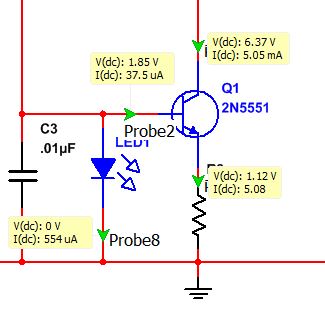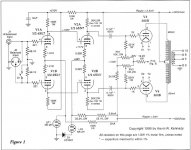I not a car stereo guy, but I've routed some pretty long unbalanced interconnects in my cars that were always dead quiet.
Thank the amplifier designers. 😉
Why do you think you need a balanced output/input pair?
How many meters between preamp or sound source and power amplifier to make a balanced line necessary?
20 meters? 50? 100?
Are you in a high electromagnetic interference area? Meaning Radio Transmitter antenna , near a power station or high voltage transmission lines?
Audio runs through or along a shop with many electric motors running?
Is a high power mains line buried nearby?
How many meters between preamp or sound source and power amplifier to make a balanced line necessary?
20 meters? 50? 100?
Are you in a high electromagnetic interference area? Meaning Radio Transmitter antenna , near a power station or high voltage transmission lines?
Audio runs through or along a shop with many electric motors running?
Is a high power mains line buried nearby?
Why do you think you need a balanced output/input pair?
All things being equal, it's the optimal scheme for signal cabling. As you note, a low-Z balanced line can run for tens of meters without unacceptable degradation. It more or less takes the interconnect cables out of the equation and solves a couple other issues in the process. There's just no better way to control an analog line.
Balanced lines can be longer, which means that mono amps can be placed closer to the loudspeakers, keeping the speaker cables shorter.. and being that speaker cables also have artifact, it's best to keep them as short as reasonably possible. Speaking of cables and artifact, XLR connectors tend to be of a better quality than many RCA connectors. Work-a-day Neutrik or Switchcraft parts are excellent. And likewise, very good quality balanced cable is available at fair prices from makers like Mogami, Belden, Whirlwind and several other competitors.
Do we all need it? No.. Is it a desirable thing? Very much yes.
I mentioned, it's in an automotive environment which is very noisy, electrically speaking. The radio is grounded at the front of the car, the amplifier at the back. The lighting system, like the tail lights for example, has a ground in the rear. Something as simple as those tail lights an a rear defroster puts 10s of amps through the chassis. That's one issue. The radio's ground could be anywhere under the dash sharing it's connection with anything from interior lights to the engine's computer. All that noise winds up in the audio outputs of the radio. I could star-ground all my audio equipment and never get rid of buzzes, clicks, whines, and whatnot.
Back in the day, 80s and into the 90s, mobile amplifiers didn't have proper attention paid to potential noise on the input. Quite often we'd have to tolerate a little alternator whine because it was a never ending battle trying to get rid of it. We'd FINALLY succeed and then come first rain, bzzzzeer bzzzzeer............bzzzzeer bzzzzeer............bzzzzeer bzzzzeer............ Who can guess what that was? 🙂
Back in the day, 80s and into the 90s, mobile amplifiers didn't have proper attention paid to potential noise on the input. Quite often we'd have to tolerate a little alternator whine because it was a never ending battle trying to get rid of it. We'd FINALLY succeed and then come first rain, bzzzzeer bzzzzeer............bzzzzeer bzzzzeer............bzzzzeer bzzzzeer............ Who can guess what that was? 🙂
Ok now I'm stumped...
How would I go about making a LTP stage, that will take a balanced input, and then apply NFB without upsetting the impedance between the inputs?
I searched for examples but couldn't find anything.
How would I go about making a LTP stage, that will take a balanced input, and then apply NFB without upsetting the impedance between the inputs?
I searched for examples but couldn't find anything.
Ok now I'm stumped...
How would I go about making a LTP stage, that will take a balanced input, and then apply NFB without upsetting the impedance between the inputs?
I searched for examples but couldn't find anything.
Look here is one:
 Compromised URL removed by Moderation
Compromised URL removed by Moderation from:
Baby Huey PP EL84 amplifier
NFB can be applied to only one of grid input with right phase, since the output is asymmetry, only one input is needed, LTP in turn control the output of both output to drive the amp correctly.
Here are a little discussion you can read.
Last edited by a moderator:
Look here is one:
 Compromised URL removed by Moderation
Compromised URL removed by Moderation Compromised URL removed by Moderation
from:
Baby Huey PP EL84 amplifier
NFB can be applied to only one of grid input with right phase, since the output is asymmetry, only one input is needed, LTP in turn control the output of both output to drive the amp correctly.
Here are a little discussion you can read.
That's almost exactly what I ended up doing last night.
Last edited by a moderator:
What's the type of the tube you're about to use? Sorry, but I can't read it in your schematics.
You may need to relate the CCS to some negative supply, as in this depicted configuration the 2n5551 may operate near saturation.
Best regards!
You may need to relate the CCS to some negative supply, as in this depicted configuration the 2n5551 may operate near saturation.
Best regards!
Oh sorry. I should have re-positioned the text. The tube in the schematic above is a 12AU7.

Attachments
Last edited:
Ah, then it is ok. A Vce of about 5.25 V doesn't mean saturation for the NPN device.
Best regards!
Best regards!
Does anyone have an example of a tube amplifier with a differential (balanced) input? This doesn't seem like it would be as hard as it is. I can make an input stage like the one above and it has fairly low distortion. Incorporating it into an amplifier is proving difficult.
Last edited:
Look for the Dynacord Gigant II. That amp has 6 balanced inputs.
Found it. Looks like a pseudo-balanced input using a single triode.
Look for the Dynacord Gigant II. That amp has 6 balanced inputs.
I don't think that this is what the OP wants. The Gigant has transistorized input and mixer stages, it's inputs are not truely balanced, the signal being fed to the base and the emitter of the first transistors.
If a SS balanced input were acceptable, I'd recommend an instumentation amplifier.
Best regards!
The Gigant has transistorized input and mixer stages, it's inputs are not truely balanced, the signal being fed to the base and the emitter of the first transistors.
If a SS balanced input were acceptable, I'd recommend an instumentation amplifier.
Best regards!
The base is the + input and the emittor is the - input. When a strange signal is induced to both wires the result is 0. A balanced signal has twice the gain as an unbalanced signal when the - input is grounded. So it's a semi balanced input.
An instrumentation amplifier is for audio signals i.m.o overdone.
- Status
- Not open for further replies.
- Home
- Amplifiers
- Tubes / Valves
- How can I add a balanced input to a tube amplifier?




